Abstract
In man, the main pancreatic duct is normally derived from ventral and dorsal embryological buds of the pancreas. In a minority of people, failure of fusion of the two buds results in separate drainage of the dorsal and ventral pancreas, so that the accessory duct provides the main drainage for the gland. Patients with this anomaly demonstrated at endoscopic retrograde pancreatography (ERP) have been investigated to assess whether non-fusion of the main pancreatic duct predisposes to the development of pancreatitis. A failure of fusion of the pancreatic ducts was seen in 21 out of 449 (4.7%) successful pancreatograms; four of these 21 patients had definite clinical evidence of pancreatitis and two patients had possible pancreatic disease, but in the remainder the anomaly was not considered to be clinically relevant. An abnormal pancreatogram suggesting pancreatitis was present in 116 out of the 428 patients (27.1%) with a normally fused duct system. The anomaly was found as frequently in the whole series as it was seen in patients with pancreatitis. These findings suggest that embryological failure of pancreatic duct fusion does not predispose to the development of pancreatitis. However, the presence of this anomaly may lead to misinterpretation of ultrasonographic and CT scan findings.
Full text
PDF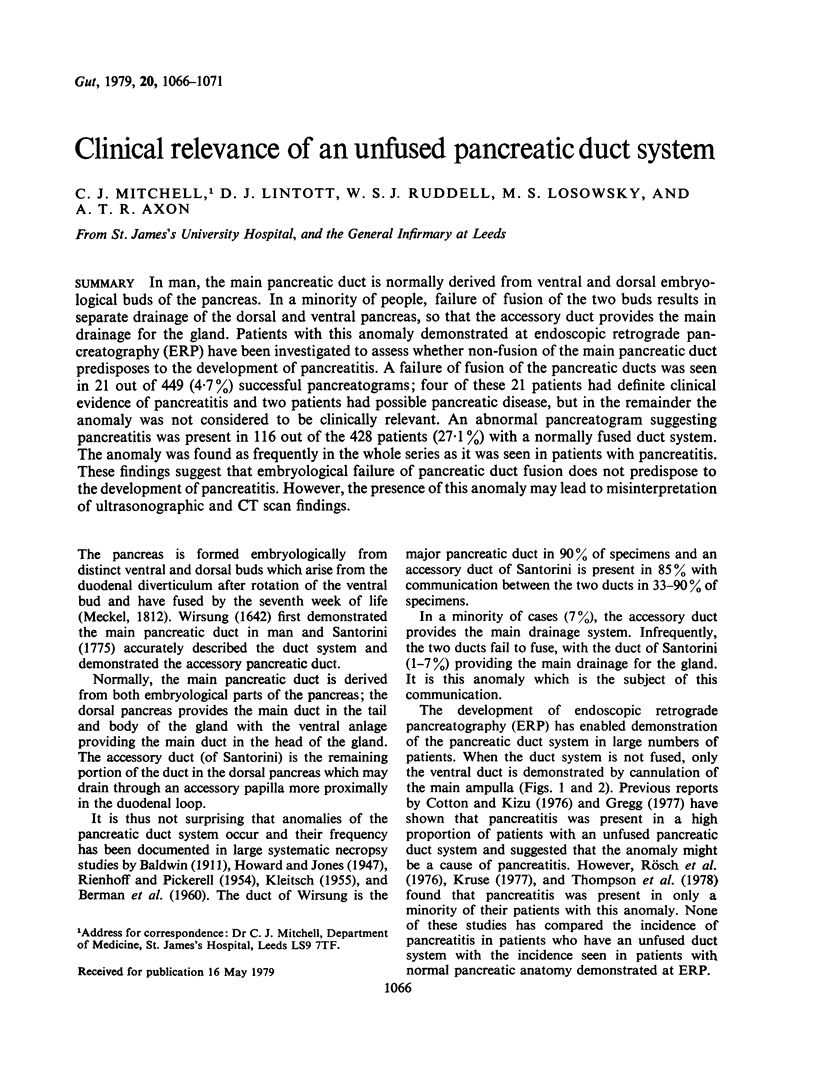
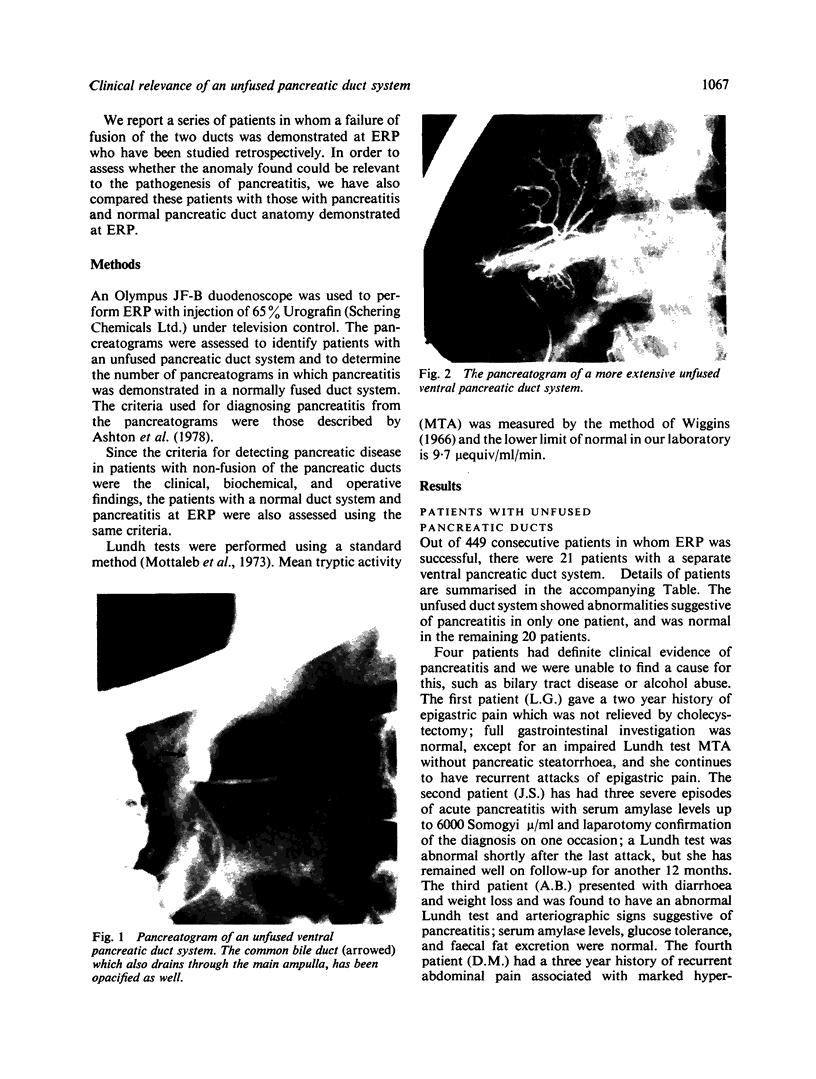
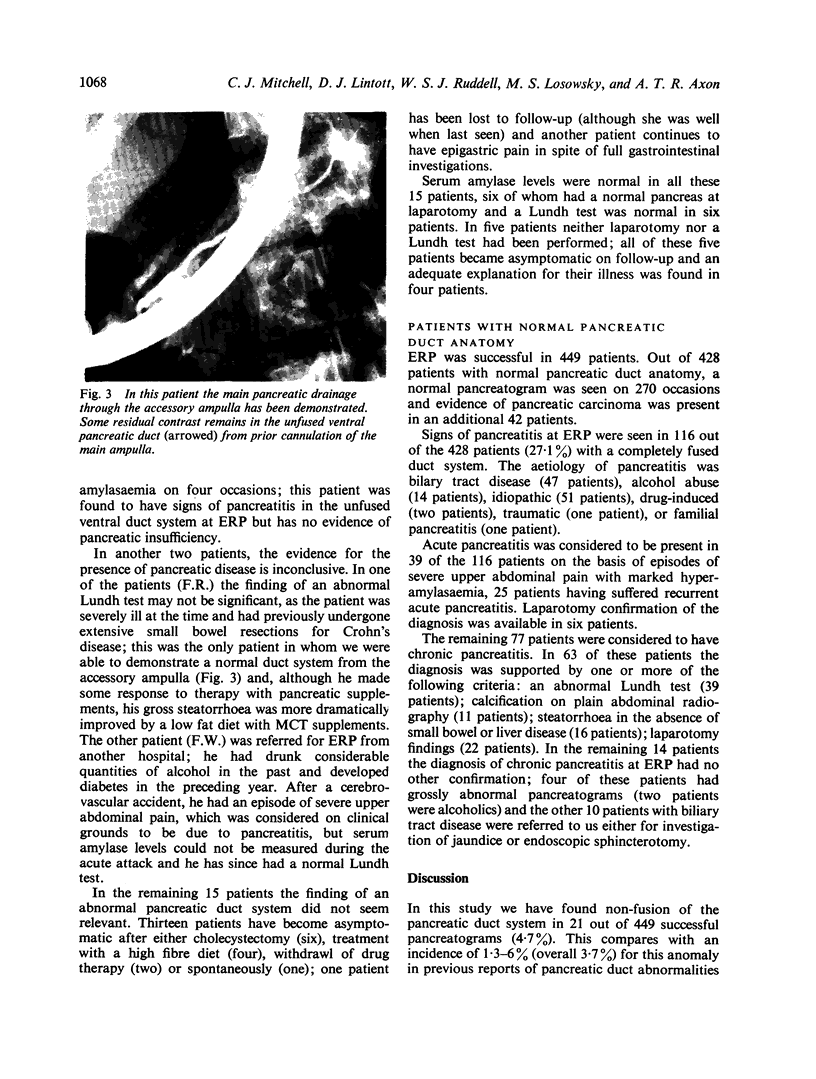
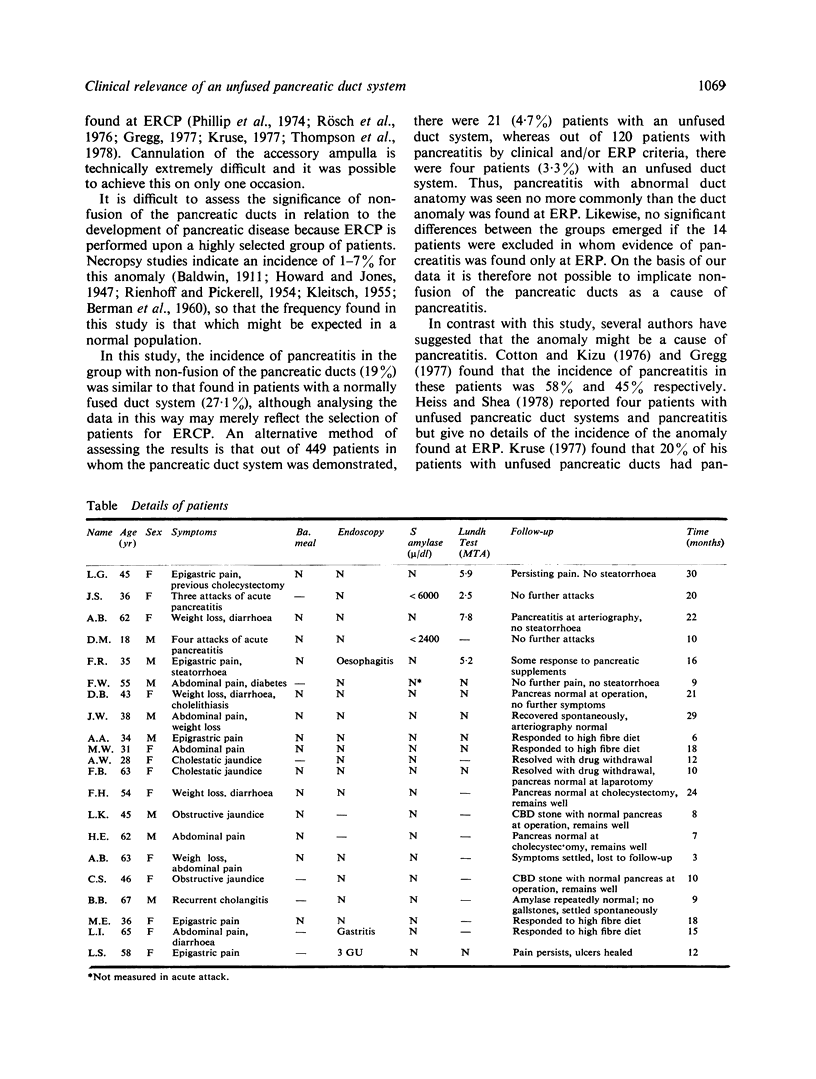
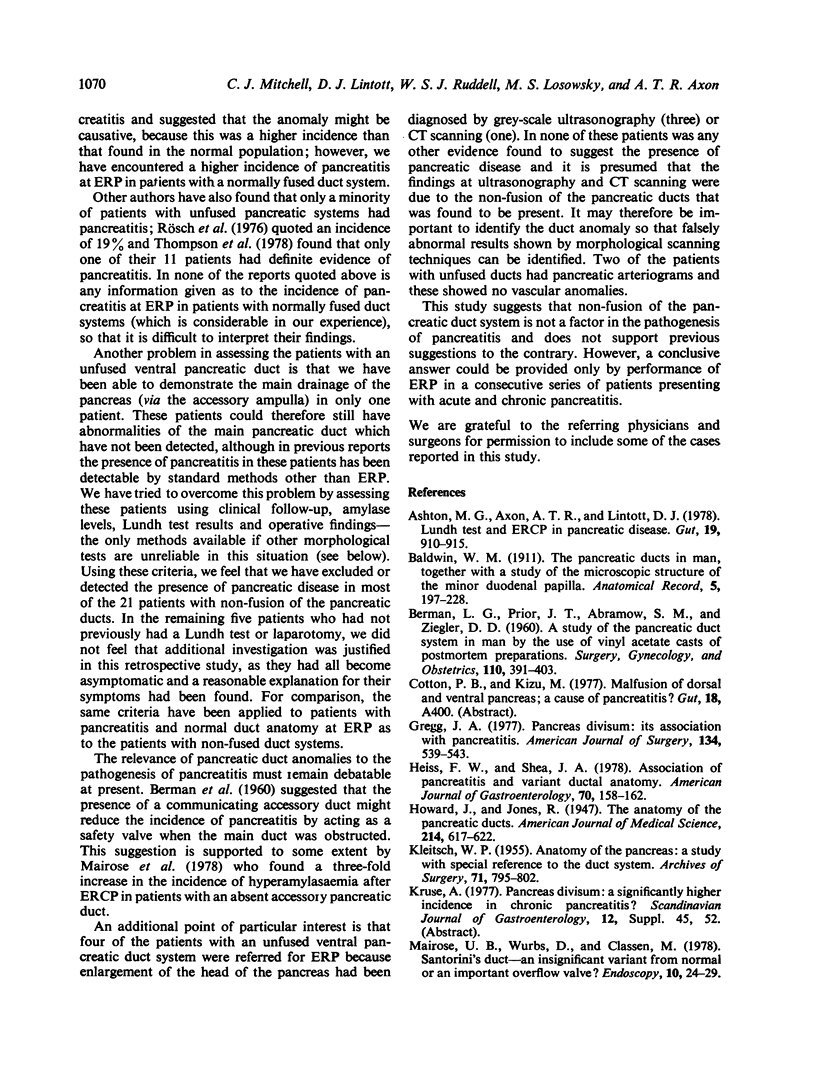
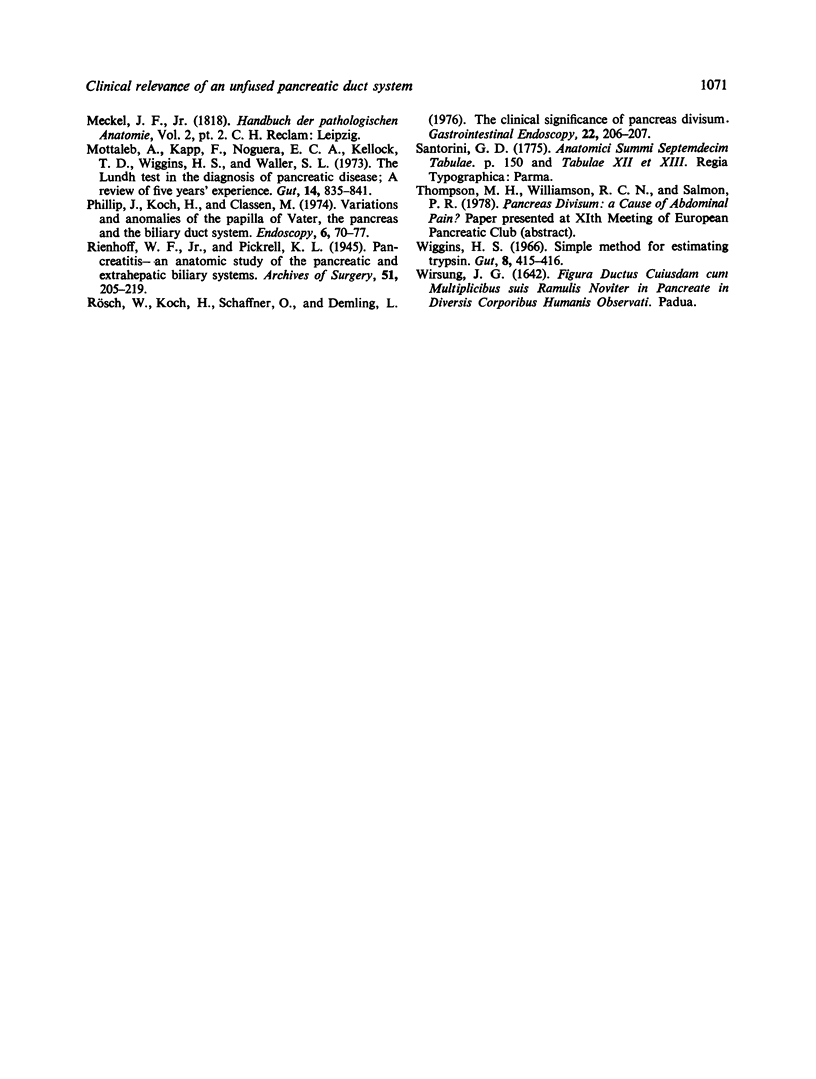
Images in this article
Selected References
These references are in PubMed. This may not be the complete list of references from this article.
- Ashton M. G., Axon A. T., Lintott D. J. Lundh test and ERCP in pancreatic disease. Gut. 1978 Oct;19(10):910–915. doi: 10.1136/gut.19.10.910. [DOI] [PMC free article] [PubMed] [Google Scholar]
- BERMAN L. G., PRIOR J. T., ABRAMOW S. M., ZIEGLER D. D. A study of the pancreatic duct system in man by the use of vinyl acetate casts of postmortem preparations. Surg Gynecol Obstet. 1960 Apr;110:391–403. [PubMed] [Google Scholar]
- Gregg J. A. Pancreas divisum: its association with pancreatitis. Am J Surg. 1977 Nov;134(5):539–543. doi: 10.1016/0002-9610(77)90429-9. [DOI] [PubMed] [Google Scholar]
- Heiss F. W., Shea J. A. Association of pancreatitis and variant ductal anatomy: dominant drainage of the duct of Santorini. Am J Gastroenterol. 1978 Aug;70(2):158–162. [PubMed] [Google Scholar]
- KLEITSCH W. P. Anatomy of the pancreas; a study with special reference to the duct system. AMA Arch Surg. 1955 Dec;71(6):795–802. [PubMed] [Google Scholar]
- Mairose U. B., Wurbs D., Classen M. Santorini's Duct--an insignificant variant from normal or an important overflow valve? Endoscopy. 1978 Feb;10(1):24–29. doi: 10.1055/s-0028-1098256. [DOI] [PubMed] [Google Scholar]
- Mottaleb A., Kapp F., Noguera E. C., Kellock T. D., Wiggins H. S., Waller S. L. The Lundh test in the diagnosis of pancreatic disease: a review of five years' experience. Gut. 1973 Nov;14(11):835–841. doi: 10.1136/gut.14.11.835. [DOI] [PMC free article] [PubMed] [Google Scholar]
- Rösch W., Koch H., Schaffner O., Demling L. The clinical significance of the pancreas divisum. Gastrointest Endosc. 1976 May;22(4):206–207. doi: 10.1016/s0016-5107(76)73755-6. [DOI] [PubMed] [Google Scholar]
- Wiggins H. S. Simple method for estimating trypsin. Gut. 1967 Aug;8(4):415–416. doi: 10.1136/gut.8.4.415. [DOI] [PMC free article] [PubMed] [Google Scholar]





